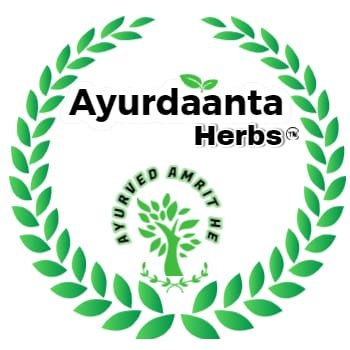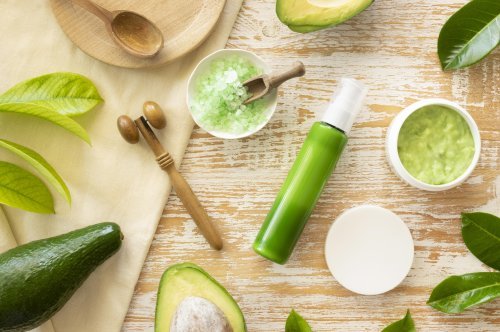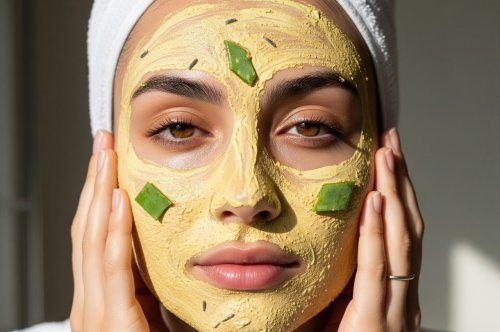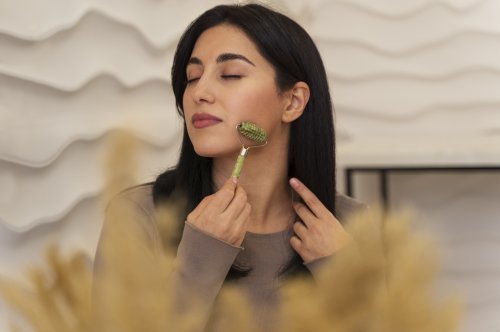Ayurvedic Remedies for Healthy Skin: How Ubtan and Face Packs Can Transform Your Routine

Ayurvedic Remedies for Healthy Skin: How Ubtan and Face Packs Can Transform Your Routine
Healthy, glowing skin is not just a matter of genes or expensive products; it's also about taking care of your skin in the most natural way possible. Ayurveda, the ancient Indian system of medicine, has been a source of holistic health and wellness for thousands of years. One of the cornerstones of Ayurvedic skincare is the use of natural ingredients to nurture the skin. Among the most popular Ayurvedic remedies for skin are ubtan and face packs. These remedies are not only effective but also gentle, offering long-term benefits without the harsh chemicals found in modern skincare.
In this detailed post, we will explore how ubtan and face packs can transform your skincare routine, providing you with glowing, healthy skin. We’ll dive deep into their benefits, the ingredients used, how to prepare them, and how they can be tailored to different skin types. Plus, we’ll provide you with step-by-step guidance on incorporating these Ayurvedic treatments into your routine for maximum results.
What is Ubtan?
Ubtan is an ancient Ayurvedic paste made from a variety of natural ingredients, which are traditionally used for cleansing, exfoliating, and nourishing the skin. It has been a beauty ritual for centuries, especially in Indian culture, where it is applied to the body before a bath or as a face mask.
The ingredients used in Ubtan vary according to skin type and concern, but the base typically includes gram flour (besan), turmeric, sandalwood powder, rose water, and milk or yogurt. These ingredients work together to cleanse the skin, remove dead skin cells, improve complexion, and treat various skin issues like acne, dark spots, and dullness.
Benefits of Ubtan for Skin
1. Exfoliation: Ubtan is an excellent natural exfoliator. The mild abrasiveness of gram flour helps slough off dead skin cells, revealing a fresh and smooth complexion.
2. Brightening and Whitening: Ingredients like turmeric and sandalwood are known for their skin-brightening properties. They help lighten dark spots and pigmentation and even out skin tone.
3. Cleansing: Ubtan deeply cleanses the skin by removing dirt, impurities, and excess oils, leaving it feeling fresh and rejuvenated.
4. Anti-Aging: Ubtan helps to reduce fine lines and wrinkles over time due to the nourishing properties of ingredients like turmeric and milk. These ingredients promote collagen production, keeping your skin youthful.
5. Treatment of Acne: The antibacterial properties of turmeric and gram flour make Ubtan an effective remedy for acne. Regular use can help reduce breakouts and prevent further acne formation.
6. Improves Skin Texture: Ubtan helps in tightening and firming the skin, making it look youthful and healthy.
How to Make Ubtan at Home
Creating your own ubtan at home is easy and cost-effective. Below are some variations you can try, depending on your skin type and concern.
For Normal to Dry Skin:
Ingredients:
- 2 tablespoons gram flour (besan)
- 1 tablespoon turmeric powder
- 2 tablespoons milk or yogurt
- 1 tablespoon honey
- Rose water (to adjust consistency)
Method:
1. Mix all the dry ingredients in a bowl.
2. Add milk or yogurt to form a smooth paste.
3. Apply the mixture on your face and body.
4. Let it sit for 15–20 minutes until it dries.
5. Gently scrub off in a circular motion while rinsing with lukewarm water.
For Oily Skin:
Ingredients:
- 2 tablespoons gram flour (besan)
- 1 tablespoon turmeric powder
- 1 tablespoon sandalwood powder
- Lemon juice (2–3 drops)
- Rose water (to adjust consistency)
Method:
1. Mix the gram flour, turmeric, and sandalwood powder.
2. Add a few drops of lemon juice and rose water.
3. Apply the paste to your face and leave it on for 10–15 minutes.
4. Scrub gently in circular motions to exfoliate the skin before washing off with water.
For Acne-Prone Skin:
Ingredients:
- 2 tablespoons gram flour (besan)
- 1 teaspoon turmeric powder
- 1 tablespoon neem powder (optional)
- A pinch of cinnamon powder (optional)
- 2–3 tablespoons aloe vera gel or rose water
Method:
1. Combine all the dry ingredients in a bowl.
2. Add aloe vera gel or rose water to make a paste.
3. Apply to the face, especially in areas with acne or pimples.
4. Leave it on for 10–15 minutes, and gently scrub it off while washing.
How Often Should You Use Ubtan?
For optimal results, use Ubtan 1–2 times a week, depending on your skin type and needs. For sensitive skin, it’s advisable to use Ubtan once a week, while oily skin can benefit from a more frequent application. Overuse can cause dryness, especially for dry skin, so always listen to your skin.

Face Packs: Another Ayurvedic Skincare Miracle
Face packs, like Ubtan, have been an essential part of Ayurvedic beauty rituals for centuries. While ubtan is primarily a scrub, face packs are designed to hydrate, nourish, and treat specific skin concerns. Ayurvedic face packs are typically made from natural powders, herbs, and essential oils, which help rejuvenate the skin and address a wide range of skin issues.
Benefits of Ayurvedic Face Packs
1. Hydration: Many Ayurvedic face packs are formulated with ingredients like yogurt, honey, and aloe vera, which are excellent for locking in moisture and keeping the skin hydrated.
2. Deep Cleansing: Face packs made from ingredients like fuller’s earth (multani mitti), turmeric, and neem can deeply cleanse the skin, removing impurities and excess oil, which is beneficial for acne-prone and oily skin.
3. Anti-Aging: Face packs containing herbs like saffron, turmeric, and sandalwood are rich in antioxidants, which help fight free radicals and slow down the aging process.
4. Soothing: Ingredients like rose water, sandalwood, and aloe vera have a cooling and soothing effect on the skin, helping to calm irritation, inflammation, or sunburns.
5. Treating Skin Issues: Specific face packs target skin problems like acne, pigmentation, dark circles, and wrinkles. Ayurvedic face packs work by treating the root causes, offering a more long-lasting solution.
Popular Ayurvedic Ingredients for Face Packs
1. Sandalwood Powder: Known for its cooling and anti-inflammatory properties, sandalwood helps in reducing acne, pigmentation, and fine lines.
2. Neem Powder: Neem is a potent antibacterial agent, making it ideal for treating acne and preventing breakouts.
3. Multani Mitti (Fuller’s Earth): This ingredient is perfect for deep cleansing and absorbing excess oils from the skin, making it great for oily and combination skin types.
4. Turmeric: Turmeric is rich in curcumin, which has antibacterial and anti-inflammatory properties. It also helps brighten the skin and reduce pigmentation.
5. Aloe vera soothes and hydrates the skin. It’s excellent for sunburns, inflammation, and dry skin.
6. Honey: Known for its moisturizing and antimicrobial properties, honey is a great ingredient for making face packs that hydrate and purify the skin.
How to Make Ayurvedic Face Packs for Glowing Skin:
Ingredients:
- 1 tablespoon sandalwood powder
- 1 tablespoon turmeric powder
- 1 teaspoon honey
- 2 tablespoons milk or rose water
Method:
1. Mix all the ingredients to form a smooth paste.
2. Apply it evenly to your face and neck.
3. Let it sit for 15–20 minutes, then rinse it off with lukewarm water.
For Acne-Prone Skin:
Ingredients:
- 2 tablespoons neem powder
- 1 tablespoon turmeric powder
- 1 tablespoon multani mitti
- 2 teaspoons rose water
Method:
1. Mix all the powders and add rose water to form a paste.
2. Apply to the face, focusing on acne or pimples.
3. Leave it on for 10–15 minutes before rinsing with warm water.
For Dry Skin:
Ingredients:
- 2 tablespoons yogurt
- 1 teaspoon honey
- 1 tablespoon aloe vera gel
- 1 tablespoon almond oil
Method:
1. Combine all ingredients in a bowl.
2. Apply the mixture to your face and neck.
3. Let it sit for 15–20 minutes, then wash off with lukewarm water.





